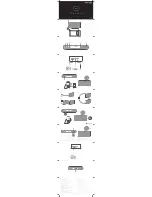
©
National Instruments Corporation
3-1
NI PXIe-5450 User Manual
3
Integration and System
Considerations
This section contains information about integrating NI signal generators
into a PXI-based or a PCI-based measurement system.
The PXI architecture has built-in timing and triggering features that can
synchronize multiple devices over a backplane timing bus. Multiple
devices in a modular instrumentation system can share a common
Reference clock and synchronize to triggers that are distributed over
controlled signal paths that ensure matched propagation. PC plug-ins with
RTSI also provide an internal bus that can be accessed by multiple devices.
Internal routing of these timing signals in PXI and PC plug-ins with RTSI
eliminate complicated external wiring. Standardized timing protocols
eliminate incompatibilities, giving you the best performance when
synchronizing any kind of analog, digital, or timing measurements.
Peripheral Component Interconnect (PCI) is a high-performance expansion
bus architecture originally developed by Intel to replace ISA and EISA. It
has achieved widespread acceptance as a standard for PCs and
workstations, and offers a theoretical maximum transfer rate of
132 Mbytes/s.
Environment
Device performance and reliability may be limited at temperatures above
the specified operating range. For best performance take the following
precautions:
•
Ensure that the ambient temperature is within the specifications for the
device and is stable (±5 °C).
•
Follow standard metrology practices.
•
Use a PXI or PXI Express chassis with a well-designed cooling
system.
Operating NI PXI and PXI Express signal generators outside the specified
operating temperatures can increase bias currents in the electronic
















































